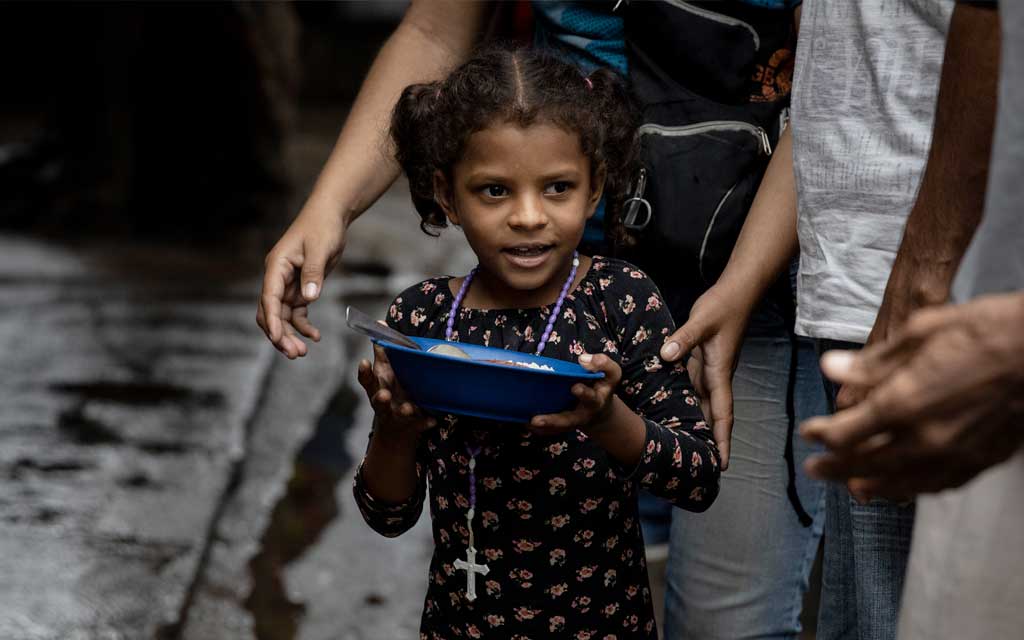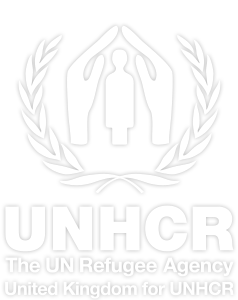Venezuela crisis
Eligio’s children were surviving on just one small meal a day.
When his daughter died for want of medicine, he knew it was time for the family to seek safety and make the dangerous journey to Brazil.
Photo: ©UNHCR/Reynesson Damasceno
Families like Eligio’s have suffered years of hardship. Now they are far from home, struggling to survive. Please help provide the aid they urgently need.

Shelter
to protect those who’ve fled with nothing.

Nutrition
to keep hungry families alive and well.

Clean water
to prevent the spread of deadly diseases like cholera.
What’s happening in Venezuela?
Venezuela is in the middle of a political, economic and humanitarian crisis. As of September 2023, more than 7.7 million people have left the country amidst violence and crippling food shortages – making it the biggest exodus in South America’s recent history.
UNHCR is supporting refugees with shelter, food and clean water, and legal support, and plans to respond to 6.5 million Venezuelan migrants and refugees in the region in 2024.
Where are Venezuelan families fleeing to?
As of September 2023, there were over 7.7 million Venezuelan refugees and migrants worldwide, of which 84% (6.5 million) were in Latin America and the Caribbean. Families are travelling primarily to Colombia, but also to Argentina, Brazil, Chile, Costa Rica, Ecuador, Mexico, Peru and beyond. These host countries have been welcoming, but they are increasingly overstretched and some are reaching a saturation point.
Colombia alone generously hosts over 2.8 million refugees and migrants from Venezuela – they join the many internally displaced Colombians spread across the country, oftentimes in hard-to-reach areas.
What dangers do they face en route?
Fleeing families often take irregular routes to find safety, crossing fast-flowing rivers or braving treacherous footpaths to reach their destinations. In the first nine months of 2023, over 400,000 people (63% of them Venezuelans) moved north through Panama’s Darien jungle – a threefold increase compared to the same period in 2022. The Darien jungle, also referred to as the Darien Gap, is one of the world’s most dangerous refugee and migrant routes, consisting of 5,000 square-kilometres of difficult terrain such as tropical wilderness and steep mountains. Crossings are also known to take up to 10 days or more for the most vulnerable.
Both in the Darien jungle and on other routes, many fall prey to smugglers, traffickers and armed groups on the way, and unaccompanied or separated children are particularly vulnerable.
Where is UNHCR working?
UNHCR is on the ground across the region and has a strong presence around key border crossing points – protecting fleeing families from danger and providing the essentials they need to survive. As well as providing life-saving aid and safe shelter, UNHCR teams also provide legal support, such as informing families of their right to seek asylum.
Where can I access the latest data?
Venezuela Situation Portal – for latest updates on the crisis overall, including UNHCR situation reports, funding requirements and UNHCR’s support for neighbouring countries taking in Venezuelan refugees.
Did you know that more than 4.4 million Venezuelan refugee and migrants face difficulties accessing food, shelter, healthcare, education and formal employment?

Valentina has known hunger and hardship for much of her young life.
When her family left Venezuela in search of a better life, they headed to Colombia – never knowing what they might find there.
Thankfully, they reached a communal kitchen supported by UNHCR, where 5,000 free meals are served each day to help families like Valentina’s stay alive and well.
Photo: ©UNHCR/Siegfried Modola

